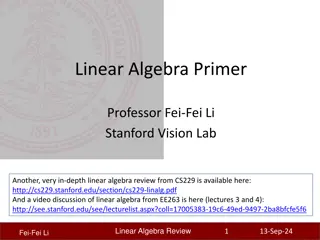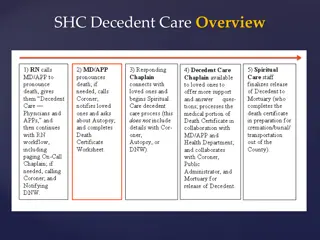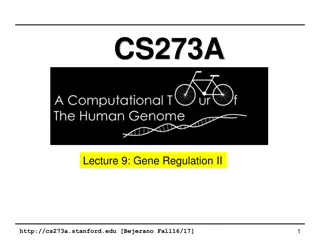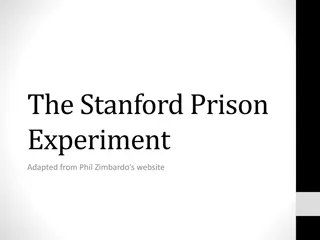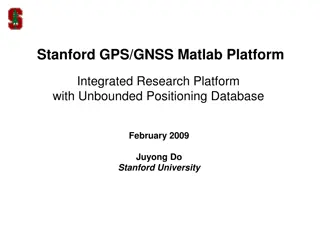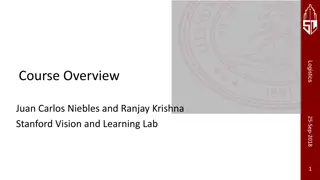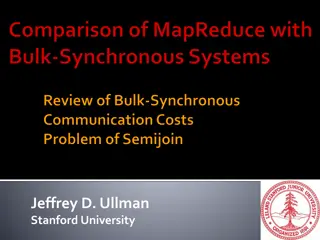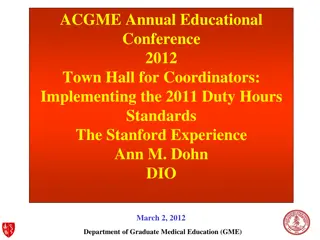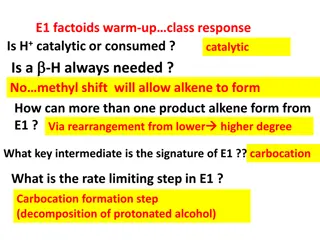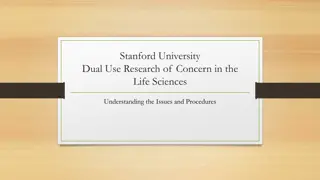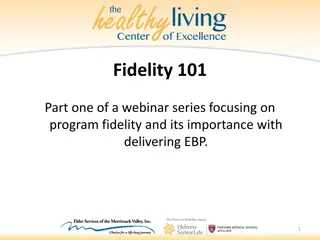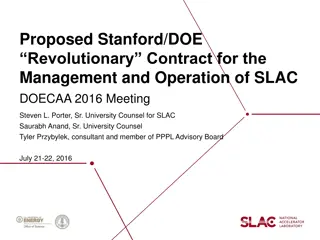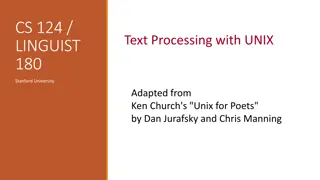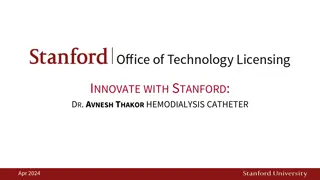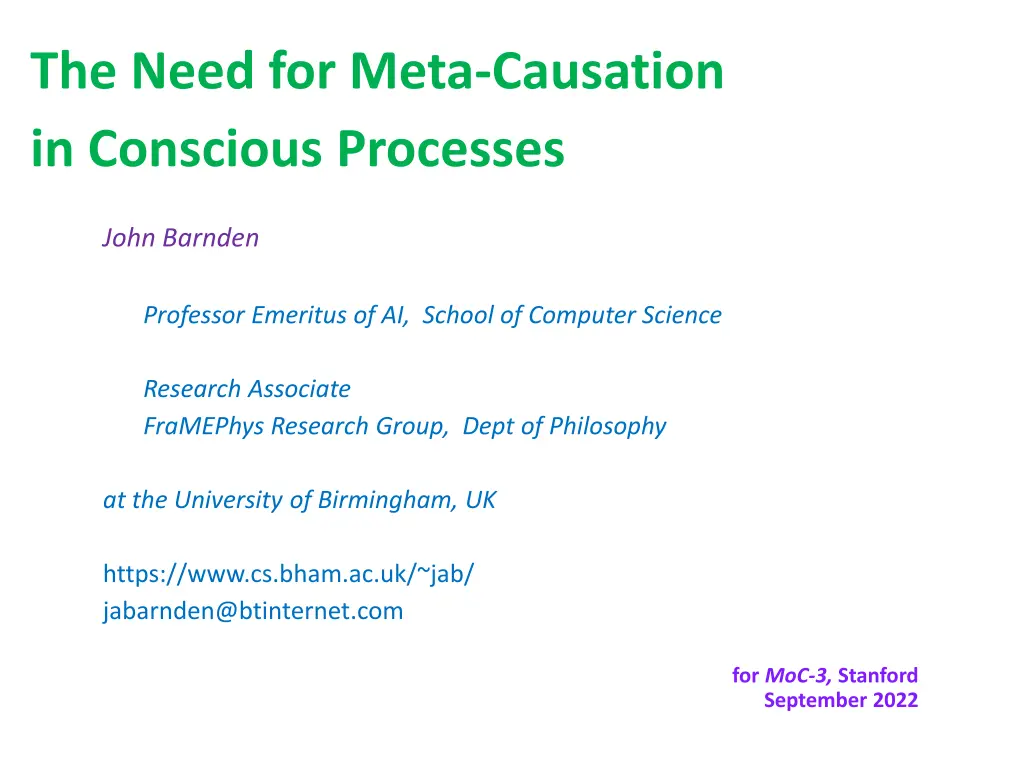
Understanding Meta-Causation in Conscious Processes
Explore John Barnden's perspective on meta-causation in conscious processes and its implications for a novel physicalist theory of consciousness. Dive into the concept of meta-dynamics and higher-order causation as essential elements in understanding the nature of consciousness at a fundamental level. Discover how Barnden's work challenges traditional views on causation and redefines the role of consciousness in physical processes.
Download Presentation

Please find below an Image/Link to download the presentation.
The content on the website is provided AS IS for your information and personal use only. It may not be sold, licensed, or shared on other websites without obtaining consent from the author. If you encounter any issues during the download, it is possible that the publisher has removed the file from their server.
You are allowed to download the files provided on this website for personal or commercial use, subject to the condition that they are used lawfully. All files are the property of their respective owners.
The content on the website is provided AS IS for your information and personal use only. It may not be sold, licensed, or shared on other websites without obtaining consent from the author.
E N D
Presentation Transcript
The Need for Meta-Causation in Conscious Processes John Barnden Professor Emeritus of AI, School of Computer Science Research Associate FraMEPhys Research Group, Dept of Philosophy at the University of Birmingham, UK https://www.cs.bham.ac.uk/~jab/ jabarnden@btinternet.com for MoC-3, Stanford September 2022
Aim and Context Main Aim today: Outline an argument contributing to a novel physicalist theory of [phenomenal] consciousness MDyn. Work in Progress. (( Barnden (2020) gives MDyn a preliminary, simplified mathematical-physical form, but this talk won t go into that and the talk implies adjusting that treatment )) (( Current simplifications/limitations include: Not yet accounting for quantum or relativistic effects. Assuming full physical determinism. )) ----------------------------------------------------------------------------------------------------====--- Barnden, J.A. (2022). Pre-reflective self-consciousness: a meta-causal approach. [ MCA there] Review of Philosophy and Psychology, online 22/1/22; DOI 10.1007/s13164-021-00603-z Barnden, J.A. (2020). The meta-dynamic nature of consciousness. Entropy, 22(12), 1433; DOI 10.3390/e22121433 (in Spec. Iss. on Models of Consciousness). Barnden, J.A. (2014). Running into consciousness. J. Consciousness Studies, 21 (5-6), 33 56.
The Flavour of CONSCIOUSNESS ((in a non-egological, pre-reflective base form)) MDyn ((Consciousness is a property of physical processes constituted of some suitable arrangement ((partly TBD)) of and only derivatively of states or of organisms)) META-DYNAMICS or META-CAUSATION HIGHER-ORDER (or ITERATED) CAUSATION: causing itself can have casual power and/or sensitivity Only sparsely considered in the literature (Kovacs 2021)
The Flavour of MDyn, contd Causation/dynamics: considered AT A BASIC PHYSICAL LEVEL ((NOT taking causation to be as typically discussed [Kutach 2014] i.e., as a relation between roughly point-like events at different times)) the continuous becoming or pushing forward of state through time it s the way the state at a time is produced by states leading right up to that time, This, radically, being PHYSICALLY REIFIED as PART OF PHYSICAL STATE ((as described e.g. by what the differential equations arising from physical laws say about time t))
The Flavour of MDyn shows meta-causation but part of causation [-------------------------------------a conscious process ----------------------------] causation causation PLATFORM for t space incoming causation Into the process from outside any time t within process s time-span after start time
Some Overall Argumentation Structure for MDyn the causation within a conscious process P is crucial to its consciousness X C ness is a matter of structure of ORDINARY causation?? cf. Mindt 2021 NO that causation EXPLICITLYMATTERS to P itself, (as well as forming P) differentially compared to its sensitivity to matters OUTside P P, throughout, is DIFFERENTIALLY ((& distinctively))physically SENSITIVE to ITS OWN (recent) abutting internal causation (( distinctively compared to its sensitivity to other matters INside P )) TODAY [in typical system types] we cannot achieve this differential auto- sensitivity using familiar sorts of physical state and causation supplements previous arguments that use e.g. well- known difficulty of naturalizing representation (TODAY) The auto-sensitivity is by DIRECT META-CAUSATION ((by TIME-EXTENDED CHUNKS OF CAUSATION))
Some Advantages over Ordinary-Causal-Structure Theories Mdyn smeta-causation easily & naturally caters for consciousness itself intrinsically having causal effects on other matters. In OCSTs, only states reached have actual causal effects, and there s no reason they couldn t have been reached without consciousness, so consciousness is only indirectly and non-intrinsically able to cause things. (( MDyn makes the identity between causal structure and consciousness less mysterious. [Barnden 2022] )) (( MDyn easily & naturally caters for (non-conceptual) consciousness of consciousness. [Barnden 2022] )) (( MDyn may cure beer-can-and-string style problems with causal functionalism. )) (( MDyn may have distinctive advantages concerning adaptive benefits of consciousness. [cf. a talk in April 2022] ))
Abandon the Differential Aspect of Causal Auto-Sensitivity? the causation within a conscious process P is crucial to its consciousness that causation EXPLICITLYMATTERS to P itself, (as well as forming P) differentially compared to its sensitivity to matters OUTside P P, throughout, is DIFFERENTIALLY ((& DISTINCTIVELY)) physically SENSITIVE to ITS OWN (recent) abutting internal causation TODAY ABANDON?? [in typical system types] we cannot achieve this differential auto- sensitivity using familiar sorts of physical state and causation NO? The auto-sensitivity is by DIRECT META-CAUSATION by TIME- EXTENDED CHUNKS OF CAUSATION??
Abandon the Differential Aspect?, contd No it serves an auto-individuating or own-boundary-setting quality of a conscious process. I proposes that there is phenomenological backing for this quality. A more technical point: Without the differential aspect, more-or-less arbitrary, slimmer, messy streams within a conscious process would count as conscious. And, (at least often) these would have no phenomenological reality. But, the differential aspect will get us into trouble with two sorts of INsensitivity as follows
A Processs Consciousness is a Purely Internal Issue ___________________________conscious process P ______________________ REASONABLE ASSUMPTION: Internality of Consciousness: Whether a process Pis aconscious process or not (and its specific phenomenology) is determined wholly by its INNER NATURE: its states and inner causation (even though the inner causation may only partially cause the states). ((Causal input can affect the being-conscious and the specific phenomenology but only via its effects on inner states and causation.)) IN PARTICULAR
State-Confirmation INsensitivity of Being-Conscious ___________________________conscious process P ______________________ Pt [ time t ] ___________________amended process P, STILL conscious ________________ Pt CONFIRMATORY INPUT (( REASONABLE COROLLARY: State-Confirmation Insensitivity of Being-Conscious: Suppose P is a conscious process (in any sort of physical system) and t any time in its time-span. Then: When an input is added (via added mechanism as necessary) that merely confirms the state in P at t, then Pis still a conscious process. ))
Mechanism Movement/Translation/Replication INsensitivity, Standardly __________________ conscious process P _____________________________ Pt1 Pt2 Pt3 ___________moved/translated/replicated version of P, STILL conscious _____ Pt1 Pt2 Pt3 NOTE: Given familiar sorts of physical state and causation, the VALUES in a state in a process, taken by themselves, cannot differentiate between differently-located causal routes giving rise to those values. (( The differential sensitivity of a located state to a located causal route is only by virtue of the very presence of that particular route and absence of others. ))
From Differential Auto-Sensitivity to a Reductio ad Absurdum of relying on familiar states and causation _________________________conscious process P ________________________ PF J [ time F (for Fork ) ] [ time J (for Join )] SNOUT TAIL PJ PF PJ P F
With a Replicated Mechanism Added, assuming familiar sorts of state and causation _____________________ conscious process P ____________________________ [ time J (for Join )] PF J replicate shared shared LOCATED TAIL PJ PJ = QJ PF = QF same place same place located SNOUT P F = Q = QJ F QF J _____________________ conscious process Q __________________________ P is still conscious, because of State-Confirmation Insensitivity (SCI). Q is also conscious, via Mechanism-Replication Insensitivity together with SCI.
The Original Process, P, contd _______________________conscious process P _________________________ PF J [ time F (for Fork ) ] [ time J (for Join )] W-auto-sensitivity platform for PJ SNOUT TAIL PJ PF PJ PJ state PJis W-sensitive to the causation in the platform , but NOT to any outside it by the AUTO-SENSITIVITY PREMISE W is the differential way
With the Replication Added, given familiar states and causation ______________________conscious process P ____________________________ PJplatform PF J replicate shared shared LOCATED TAIL PJ PF = QF PJ = QJ same place same place located SNOUT P F = Q = QJ F QF J QJplatform ______________________conscious process Q ____________________________ PJas a state in P is W-sensitive to causation throughout the PJplatform but NOT to that in the QJ platform (after F, and going far enough back in it). QJas a state in Q isW-sensitive to causation throughout the QJ platform but NOT to that in the PJ platform (after F, and going far enough back in it). But PJ=QJ Hence CONTRADICTION. by differential aspect of AUTO-SENSITIVITY PREMISE
The Tail Wags Two Ways Too [ time J ] PF J shared TAIL from J replicate PF same place TA QF J PJ= QJ Get similarCONTRADICTIONconcerning the auto-sensitivity at states TA in the tail soon enough after time J, ((subject to natural assumptions about the temporal extent of platforms, e.g. (simplest): Far enough after the start of any given conscious process, platforms have a minimum temporal extent. ))
P, throughout, is DIFFERENTIALLY ((& distinctively))physically SENSITIVE to ITS OWN (recent) abutting internal causation TODAY [in typical system types, allowing above replication] we cannot achieve the required differential auto- sensitivity using familiar physical states and causation The root of the problem: A state cannot be differentially sensitive to a particular LOCATED causal route to itself, but at most to its location- invariant aspects
The root of the problem: [in typical system types, allowing above replication] we cannot achieve the required differential auto- sensitivity using familiar physical states and causation A state cannot be differentially sensitive to a particular LOCATED causal route to itself. SO (( Allow values in a state to directly represent times and places occupied by prior causation?? )) HOW ACHIEVE IT? X ?? suggest NO Radical new aspect of fundamental physical state: located causation giving rise to a state can also be A PART OF the state Causation between fundamental physical states can include META-CAUSATION suggest (( and physical state as a whole is NOT fundamentally defined at spacetime POINTS ??[cf. Arntzenius 2014: Ch.4, Bohm & Hiley 1993: 374ff), Weinstein & Rickles 2019.] ))
Exploit meta-causation for purposes of consciousness ?? suggest suggest Need for consciousness to have causal effects MDyn s proposal: causation within a state s platform in a conscious process meta-causally affects causation (etc.) at that state, MDyn escapes the above contradiction: a conscious process cannot just confirm another one at a join as above: and this meta-causation is part of the state Values in its states DO NOW depend on the particular located causal routes taken to the states. The differential auto- sensitivity and hence consciousness of a process is determined by its inner nature.
((Butdespite banning confirmatory joining of conscious processes)) A conscious process can have separate stretches, and they can join at a shared state: It s just that that state treats the stretches as a unitary, joint history: The meta-causation from both stretches taken together is part of the state MDyn allows complex, non-confirmatory merging of conscious processes P and Q (whether a copy of P or not) at a given place. For example: the overall combined process being conscious, with also P and Q themselves being conscious, but complexly combined by ordinary causation for while after J before possibly losing their separate identity at some time after J.
Thanks very much. Questions, please.
References Arntzenius, F. (2014). Space, time, and stuff. Oxford University Press. Barnden, J.A. (2014). Running into consciousness. J. Consciousness Studies, 21 (5 6), pp.33 56. Barnden, J.A. (2020). The meta-dynamic nature of consciousness. Entropy 22(12), 1433; https://doi.org/10.3390/e22121433 (in special issue on Models of Consciousness). Barnden, J.A. (2022). Pre-reflective self-consciousness: a meta-causal approach. Review of Philosophy and Psychology, online 22/1/22; DOI: 10.1007/s13164-021-00603-z Bohm, D. & Hiley, B.J. (1993). The undivided universe: An ontological interpretation of quantum theory. London and New York: Routledge. Kovacs, D.M. (2021). The question of iterated causation. Philosophy and Phenomenological Research, 104 (2), pp.454--473. DOI: 10.1111/phpr.12782 [iterated causation = meta- causation in my terminology] Kutach, D. (2014). Causation. Cambridge, UK: Polity Press.
References, contd Ludwig, D. (2022). The functional contributions of consciousness. Consciousness and Cognition, 104, 103383. DOI: https://doi.org/10.1016/j.concog.2022.103383 Mindt, G. (2021). Not all structure and dynamics are equal. Entropy, 23, 1226. https://doi.org/10.3390/e23091226 Weinstein, S. & Rickles, D. (2019). Quantum gravity. In Zalta, E. (Ed.), Stanford Encyclopedia of Philosophy (Summer 2019 ed.). https://plato.stanford.edu/archives/sum2019/entries/quantum-gravity/
Type Identity and Massive Realizability I really do mean consciousness IS the suitably-arranged meta-causation, not that consciousness is merely emergent from it in some magical way. MDyn is a type-identity theory of consciousness, but the identity is not particularly with brain or biological-body states, so have massive multiple realizability in detail despite high-level identity.
Replicating a Typical Mechanism: Example 1 Conscious process P = the run of a program on a computer, with (for simplicity of discussion) no input from outside except at start of operation. Now imagine adding a replication of the computer, with intermittently operating connections between the two computers such that at time F (for Fork ) the signals going into the registers of the original computer also go into the corresponding registers in the replication, and conversely at time J (for Join )the signals into the registers of the replication also go into the corresponding registers of the original computer via a joining mechanism that symmetrically and conservatively combines the two signals at each register i.e. combn(S1, S2) = combn(S2, S1) and combn(S,S) = S with the original mechanism being viewable as a replication of the replication.
State Replication under Ordinary Physical Assumptions On ordinary physical assumptions, the replicated computer, during its operation between F and J, develops the same register states as the original computer does, and hence at time Jit merely confirms what the original computer would have put in its registers anyway. Then have TWO distinct (though located-tail-sharing) processes: (( P = the run in original computer up to F, in original between F and J, & in original from J. Q = the run in original computer up to F, in replication between F and J, & in orig. from J. )) In a moment, we ll argue that: P is still conscious because of State-Confirmation Insensitivity. Q is also conscious, by a symmetry argument.
Replicating a Typical Mechanism: Example 2 Very similarly Conscious process P = the activity of a biological neural network, with no internal interactions other than along axons and dendrites, and (for simplicity of discussion) no input from outside except at start of operation.
Also, Q in the Thought-Experiment is Conscious If Q had happened without P, it would merely have been a partially translated version of P. It would have been conscious. P can be regarded as an added partly replicated version of Q, merely confirming state QJ at time J. So Qis still conscious.
on the Typicality Restriction The process-joining thought experiment wouldn t work as it stands if it were impossible to add the replication mechanism without significantly disturbing the process in the original mechanism. Cf. neurons communicating by pervasive electric fields or diffuse chemical transmission.)) May be possible to vary the experiment to cope with this.
Auto-Sensitivity Actual, Not Dispositional The auto-sensitivity needs to actually happen it s not enough for recent causation to have had an ability or even a disposition to affect current state. [cf. a point in Ludlow (2022) about conscious access in GWT needing not to be merely potential] But ordinary causation is beset by issues concerning interruption, pre- emption, redundancy, etc. By including, in each state of a conscious process, the meta-causation from the causation in an abutting interval, the causation there has an effect on current state even if it can be argued it would not otherwise have led to that state.
Help from Two Different but Linked Aspects of MDyn s Meta-Causation Having the meta-causation included in the state at current time t in a conscious process serves to prevent confirmatory joining and more broadly to ensure that the differential auto-sensitivity is a process-internal matter. Having the meta-causation come from a particular chunk of abutting causation serves to identify fully which recent causation is at issue.



